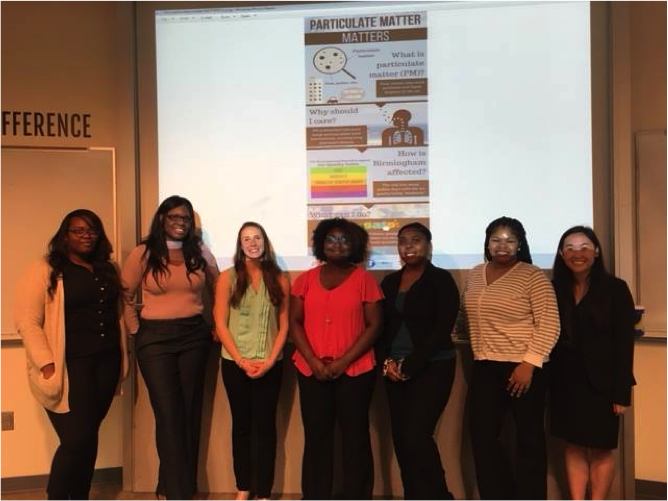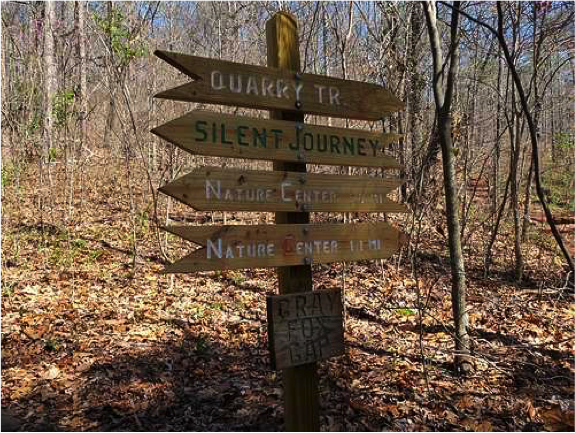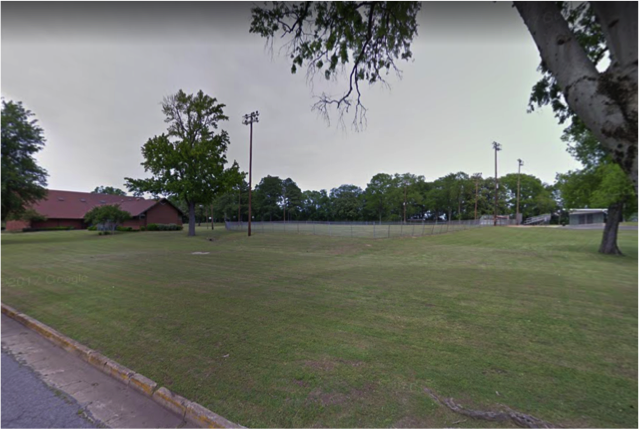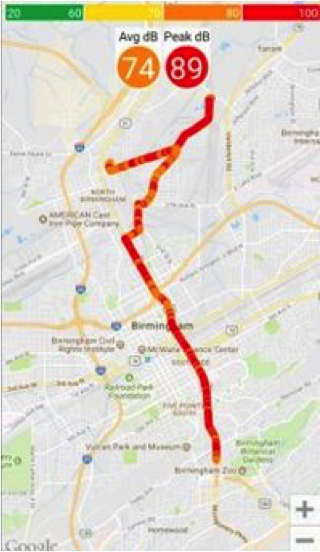Hello! We are Team Leggo My Eggo 11’s, and through our Environmental Factors of Public Health class at UAB, we had the unique opportunity to work with Gasp on a service learning project. Gasp provided us with an air monitor, called an AirBeam, which allowed us to conduct mini air quality studies to determine the air quality in different parts of Birmingham. The AirBeam measures particulate matter, which is tiny particles in the air that are 30 times smaller than hair (4 times smaller than pollen). With our data, we assisted Gasp and also learned about the reality of the air quality of our environment.
Based on our knowledge that, historically, North Birmingham has poorer air quality, we wanted to compare it to an area with expected good air quality, such as a more rural area. Therefore, our hypothesis was that the air quality in North Birmingham Park (North Birmingham) would be lower than that of Ruffner Mountain (East Birmingham).
We used the AirBeam for two hours each at both locations to gather air quality data. Below are the readings for North Birmingham Park and Ruffner Mountain.
The colors on the maps indicate the air quality: green is good; yellow is moderate; orange is unhealthy for sensitive groups; red is unhealthy.
The maps show a broad view of the air quality in both locations, but a more precise reading of air quality was taken at every second over the span of 2 hours by the AirBeam. This data was downloaded as an Excel sheet, and we were able to calculate the average particulate matter reading.
|
Site |
Average Particulate Matter Reading |
EPA Air Quality Index Rank |
|
Ruffner Mountain (East Birmingham) |
33.56 |
Good |
|
North Birmingham Park (North Birmingham) |
64.50 |
Moderate |
Our service learning project with Gasp allowed us to become citizen scientists—getting involved with public research and sharing our findings with others. We were able to collect data on particulate matter in North Birmingham and East Birmingham, which also allowed us to compare their particulate matter levels.
Through citizen science, we had the opportunity to do relevant research in our community, enhancing our knowledge about our environment and giving us the hope that we can improve our surroundings.






